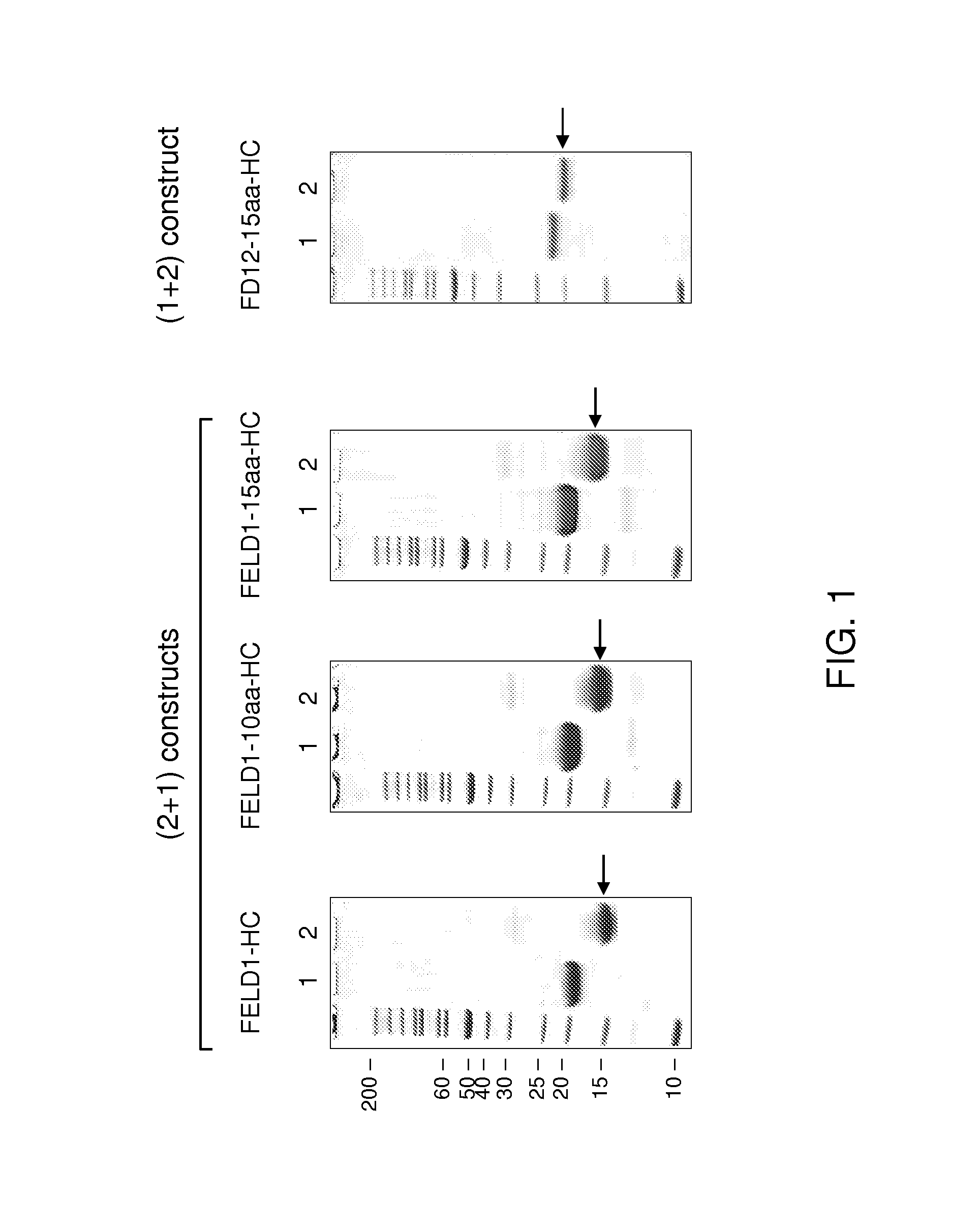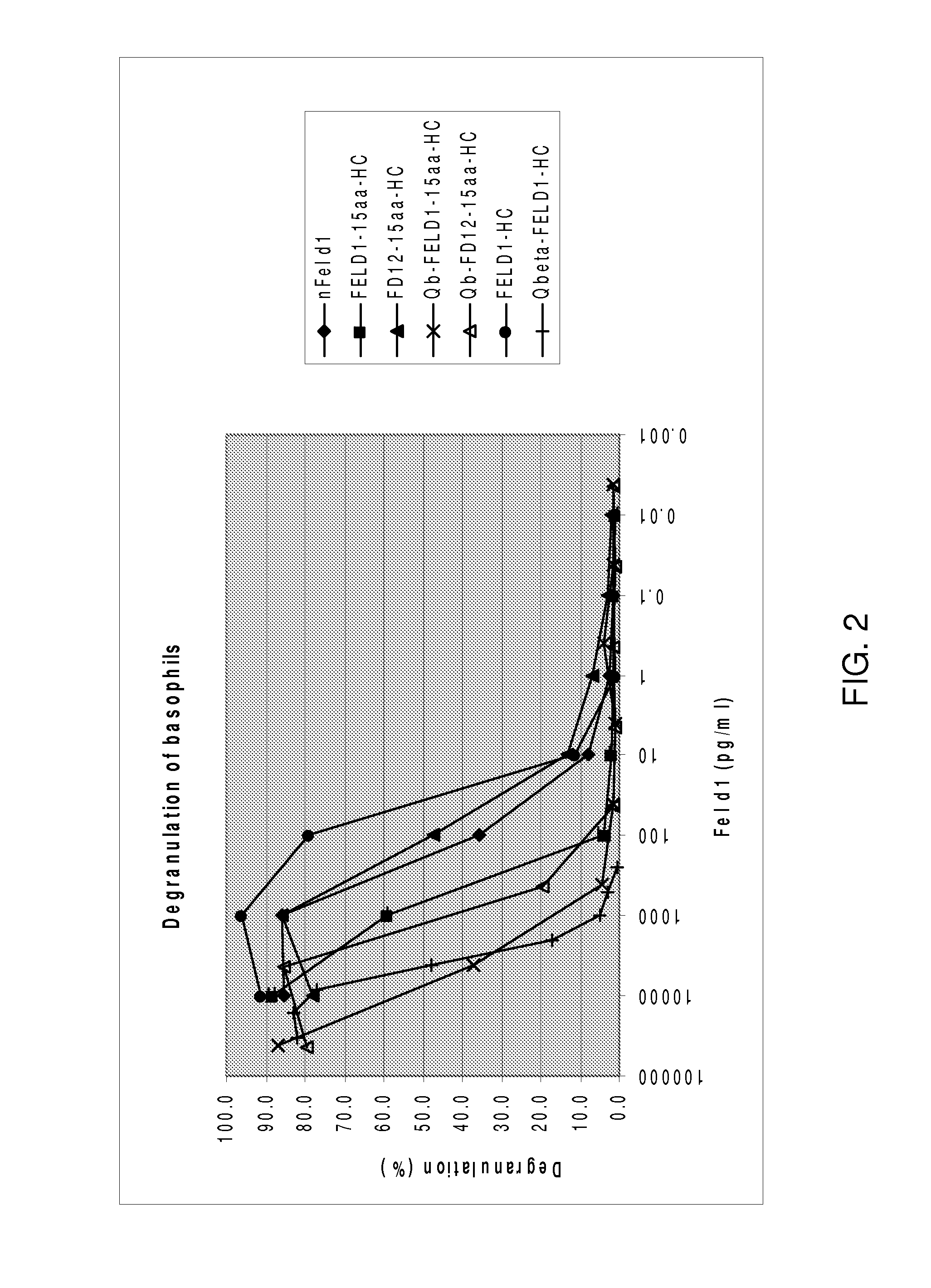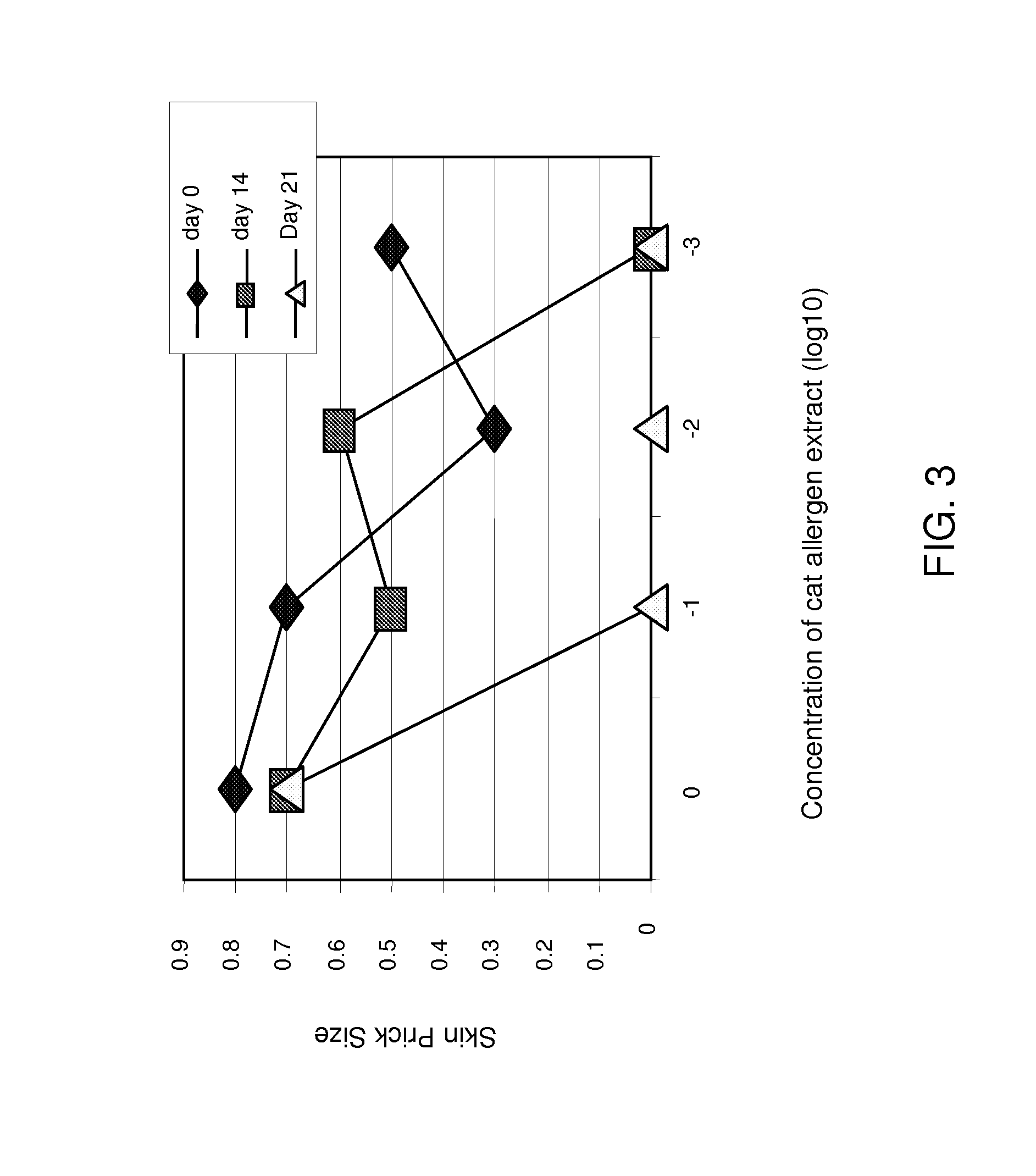CAT allergen conjugates and uses thereof
a technology of conjugates and allergens, applied in the field of cat allergen conjugates, can solve the problems of prolonging treatment or reducing the efficacy of treatment, and achieve the effects of reducing anaphylactic activity, high degree of antigenecity and immunogenecity, and high efficacy of inventive compositions
- Summary
- Abstract
- Description
- Claims
- Application Information
AI Technical Summary
Benefits of technology
Problems solved by technology
Method used
Image
Examples
example 1
Preparation of Qβ VLPs of the Invention by Disassembly / Reassembly in the Presence of Different Polyanionic Macromolecules Resulting in Reassembled Qβ VLPs
[0136](A) Disassembly of Prior Art Qβ VLP
[0137]45 mg prior art Qβ VLP (2.5 mg / ml, as determined by Bradford analysis) in PBS (20 mM Phosphate, 150 mM NaCl, pH 7.5) purified from E. coli lysate was reduced with 10 mM DTT for 15 min at room temperature under stirring conditions. Magnesium chloride was then added to 0.7 M final concentration and the incubation was continued for 15 min at room temperature under stirring conditions, which led to the precipitation of the encapsulated host cell RNA. The solution was centrifuged for 10 min at 4000 rpm at 4° C. (Eppendorf 5810 R, in fixed angle rotor A-4-62 used in all following steps) in order to remove the precipitated RNA from the solution. The supernatant, containing the released, dimeric Qβ coat protein, was used for the chromatographic purification steps.
[0138](B) Purification of the ...
example 2
In Vitro Assembly of AP205 VLPs
(A) Purification of AP205 Coat Protein
[0145]Disassembly: 20 ml of AP205 VLP solution (1.6 mg / ml in PBS, purified from E. coli extract) was mixed with 0.2 ml of 0.5 M DTT and incubated for 30 min at room temperature. 5 ml of 5 M NaCl was added and the mixture was then incubated for 15 min at 60° C., causing precipitation of the DTT-reduced coat proteins. The turbid mixture was centrifuged (rotor Sorvall SS34, 10000 g, 10 min, 20° C.) and the supernatant was discarded and the pellet was dispersed in 20 ml of 1 M Urea / 20 mM Na Citrate pH 3.2. After stirring for 30 min at room temperature, the dispersion was adjusted to pH 6.5 by addition of 1.5 M Na2HPO4 and then centrifuged (rotor Sorvall SS34, 10000 g, 10 min, 20° C.) to obtain supernatant containing dimeric coat protein.
[0146]Cation exchange chromatography: The supernatant (see above) was diluted with 20 ml water to adjust a conductivity of approx. 5 mS / cm. The resulting solution was loaded on a column...
example 3
Cloning of Fel d1 Fusion Proteins
[0149]Genes encoding Fel d1 chain 1 and chain 2, respectively, were made by PCR-amplification using overlapping DNA-primers as shown below. Forward (F) and reverse (R) primers are indicated. Fragments were ligated into pCRII-TOPO vector (Invitrogen) and transformed into XL1-Blue. Inserts of Fel d1 chain 1 and chain 2 were sequence verified.
Primer Sequence 1F: SEQ ID NO:34;
Primer Sequence 2R: SEQ ID NO:35
Primer Sequence 3F: SEQ ID NO:36
Primer Sequence 4R: SEQ ID NO:37
Primer Sequence SF: SEQ ID NO:38
Primer Sequence 6R: SEQ ID NO:39
Primer Sequence 7F: SEQ ID NO:40
Primer Sequence 8R: SEQ ID NO:41
Primer Sequence 9F: SEQ ID NO:42
Primer Sequence 10R: SEQ ID NO:43
Fel d1 Fusion Constructs:
[0150]FELD1 refers to the protein with chain 2 at the N-terminus fused directly with chain 1. Nucleotide sequences encoding FELD 1 was created by splicing overlap extension (SOE) PCR using primer 11 linker (SEQ ID NO:44).
[0151]FD12 refers to the protein with chain 1 at the N...
PUM
| Property | Measurement | Unit |
|---|---|---|
| diameter | aaaaa | aaaaa |
| apparent molecular weight | aaaaa | aaaaa |
| apparent molecular weight | aaaaa | aaaaa |
Abstract
Description
Claims
Application Information
 Login to View More
Login to View More - R&D
- Intellectual Property
- Life Sciences
- Materials
- Tech Scout
- Unparalleled Data Quality
- Higher Quality Content
- 60% Fewer Hallucinations
Browse by: Latest US Patents, China's latest patents, Technical Efficacy Thesaurus, Application Domain, Technology Topic, Popular Technical Reports.
© 2025 PatSnap. All rights reserved.Legal|Privacy policy|Modern Slavery Act Transparency Statement|Sitemap|About US| Contact US: help@patsnap.com



